Essential Tips for Cutting, Punching, and Bending Hardox Steel
When exploring how to fabricate Hardox steel, it’s essential to understand what sets it apart from other wear-resistant materials. Hardox steel is engineered for extreme durability and toughness, allowing it to perform reliably in demanding environments such as mining, construction, and heavy transport. Its unique alloy composition provides a combination of hardness and ductility, enabling fabricators to shape it precisely while maintaining superior wear resistance.
Unlike conventional steels, Hardox’s homogenous structure offers consistent mechanical properties through its thickness. This uniformity ensures predictable performance during fabrication, reducing the likelihood of defects or unexpected deformation. For shop managers and production engineers seeking reliable guidance on wear-resistant steel fabrication, companies like Ultametallic provide comprehensive solutions and expertise in handling Hardox steel.
Key Characteristics That Influence Fabrication
The high hardness of Hardox steel directly impacts how it reacts to cutting methods, punching operations, and bending processes. Its hardness, while beneficial for wear resistance, requires precise handling to avoid cracking or softening in the heat-affected zones (HAZ) during cutting.
Additionally, the material’s limited elongation compared to mild steels means that bending radius and punch tolerances must be calculated. Small errors in setup or tooling can lead to structural weaknesses or microfractures that reduce the lifespan of the final product.
Importance of Maintaining Hardness During Forming
One of the primary challenges in working with Hardox is preserving its original hardness throughout the fabrication process. Excessive heat or improper mechanical stress can lead to localized softening, which compromises wear resistance. Therefore, understanding and controlling temperature, stress distribution, and tool pressure are critical for maintaining the steel’s intended performance characteristics.
Preparing for Fabrication Setup and Equipment Essentials
Choosing the Right Cutting and Bending Machinery
Before beginning fabrication, selecting machinery capable of handling the steel high tensile strength is essential. Hydraulic presses, precision bending machines, and advanced CNC cutting systems offer the stability and control necessary to process Hardox without compromising quality. Choosing the right machinery is critical; for professional forming and manufacturing services that specialize in precision bending and cutting of wear-resistant steels, check out Ultametallic’s forming solutions. Machines with adjustable force and programmable control provide flexibility to fine-tune parameters like feed rate and cutting speed, ensuring that each operation aligns with the material’s properties.
Recommended Tooling for Hardox Grades
Tooling selection directly influences the success of cutting, punching, and bending operations. Tools should be made of high-grade materials capable of withstanding elevated stress levels and abrasive contact. Properly sharpened cutting edges and wear-resistant dies reduce friction, preventing heat buildup and tool wear.
When working with various Hardox grades, it’s advisable to use tooling with optimized clearances and radio. This reduces the risk of microcracks and maintains dimensional accuracy during forming and punching.
Equipment Calibration and Operator Checks
Regularly calibrating equipment helps ensure it works correctly. Small misalignments in cutting tables or bending presses can cause uneven cuts and inconsistent bends. Operators should check machine pressure, alignment, and tool sharpness before starting production. Routine inspections, along with clear setup documentation, help maintain consistent quality and reduce downtime from tool issues.
Cutting Hardox Steel Without Compromising Strength
Selecting the right cutting method is a crucial aspect of how to fabricate Hardox steel effectively. The choice depends on factors such as plate thickness, required precision, and desired surface quality. Laser cutting provides clean edges with minimal heat-affected zones, ideal for thinner Hardox sheets. Plasma cutting is suitable for medium-thickness plates, offering speed and accuracy when properly controlled. For precision cutting that preserves hardness, advanced solutions like CNC waterjet cutting machinesprovide accurate, heat-free results suitable for Hardox steel. Each technique has unique benefits, and the right selection ensures a balance between productivity and material integrity.
Common Cutting Methods Laser, Plasma, and Waterjet
Selecting the right cutting method is a crucial aspect of how to fabricate Hardox steel effectively. The choice depends on factors such as plate thickness, required precision, and desired surface quality.
- Laser cutting provides clean edges with minimal HAZ, ideal for thinner Hardox sheets.
- Plasma cutting is suitable for medium-thickness plates, offering speed and accuracy when properly controlled.
- Waterjet cutting eliminates heat entirely, preserving hardness and preventing microstructural changes.
Each technique has unique benefits, and the right selection ensures a balance between productivity and material integrity.
How to Reduce Heat-Affected Zones (HAZ)
The HAZ can significantly influence the performance of Hardox steel. Excessive heat can soften the material, reducing its wear resistance. To minimize this effect:
- Optimize cutting speed and power levels to balance penetration and temperature.
- Use cooling methods or air assist systems to disperse heat quickly.
- Maintain a consistent distance between the torch or laser head and the steel surface.
A well-controlled cutting process preserves hardness and prevents deformation or discoloration along the edges.
Quality Control Tips After Cutting
Post-cutting inspections are critical to ensure precision and structural integrity. Check for edge straightness, burr formation, and surface smoothness. Dimensional measurements should confirm adherence to specified tolerances, while visual inspection can identify signs of overheating or warping.
Documenting these inspections helps maintain traceability and ensures each piece meets the required fabrication standards.
Punching and Drilling Managing Tolerances and Wear
Punch Clearances and Recommended Tolerances
When punching Hardox steel, punch tolerances play a vital role in preventing tool breakage and material cracking. The clearance between the punch and die should be carefully adjusted to match the steel’s hardness and thickness. Too little clearance can cause edge cracking, while too much can lead to rough holes and excessive tool wear.
Establishing proper tolerances through trial runs and referencing technical guidelines ensures clean, accurate holes and extends tool life.
Preventing Cracks and Tool Damage
To reduce the risk of cracking during punching, ensure that the steel surface is free from defects or sharp notches before starting. Using lubricants or coatings on the punch surface can decrease friction and wear. Additionally, tools should be regularly inspected for signs of fatigue, as dull or chipped punches increase the risk of tearing and deformation.
Gradual feed rates and precise alignment during punching can further minimize impact stress on both the material and tooling.
Lubrication and Cooling Best Practices
Effective lubrication and cooling are essential in managing friction and heat buildup during drilling and punching. Use appropriate lubricants that maintain viscosity under high pressure and temperature. Continuous cooling with air or coolant prevents thermal expansion and ensures consistent hole geometry.
Proper lubrication also enhances surface finish and reduces the likelihood of galling a common issue when fabricating high-strength materials.
Bending Hardox Steel Techniques for Precision
Calculating the Correct Bending Radius
One of the most critical factors in how to fabricate Hardox steel is determining the proper bending radius. The material’s hardness and thickness dictate the minimum radius to prevent cracking on the outer surface.
A general guideline is to increase the bending radius proportionally with hardness. Using a radius that’s too tight can lead to microfractures or internal stress, which may not be visible but can compromise long-term durability. Always perform test bends on sample pieces to fine-tune the correct radius before full-scale production.
Managing Spring back and Edge Cracking
Due to its high strength, Hardox exhibits significant spring back after bending. To counter this, slightly over-bending the material based on experience or simulation data. Using precision press brakes with programmable compensation can achieve consistent angles and minimize rework.
Edge cracking can occur when bending parallel to the rolling direction. To reduce this risk, orient the bend line perpendicular to the rolling direction whenever possible. Maintaining smooth die surfaces and proper lubrication further enhances bend quality.
Step-by-Step Guide to Bending Setup
- Material Preparation: Ensure clean surfaces free from contaminants or scale.
- Tool Selection: Choose dies and punches with radii matched to the steel’s grade and thickness.
- Machine Setup: Align the tooling accurately and verify press calibration.
- Test Bend: Conduct an initial bend on scrap material to verify springback compensation.
- Production Run: Perform bending with steady, controlled pressure to avoid shock loading.
- Post-Bend Inspection: Check for dimensional accuracy, surface integrity, and cracking.
Following these steps ensures precision bending while maintaining the mechanical properties of Hardox.
Quality Control and Post Fabrication Checks
Visual and Dimensional Inspection
After cutting, punching, and bending operations, a comprehensive inspection should be carried out. Visual checks identify surface defects, while dimensional inspection ensures adherence to specified tolerances. Precision measuring tools such as calipers and coordinate measuring machines (CMMs) help verify accuracy across multiple points.
Consistent documentation of inspection results ensures accountability and enables traceability throughout the fabrication process.
Hardness Retention Testing
Since hardness defines the performance of Hardox steel, periodic hardness testing after fabrication is essential. Portable hardness testers or sample testing can confirm that the steel has not been thermally affected during processing. Maintaining uniform hardness across components ensures predictable performance in wear-intensive applications.
Documentation for Process Traceability
Recording all process parameters, inspection results, and operator notes provides a reliable quality record. This documentation helps identify process variations and supports continuous improvement efforts. It also assures clients that each component meets stringent quality standards.
Expert Tips for Long-Term Efficiency
Preventive Maintenance of Fabrication Tools
Regular maintenance of cutting, punching, and bending tools extends their lifespan and ensures consistent results. Schedule inspections for wear, alignment, and lubrication systems. Keeping detailed maintenance logs helps anticipate tool replacements before failures occur, preventing unplanned downtime.
Training Operators for Consistency
Fabricating Hardox requires skilled operators who understand the impact of each process parameter. Ongoing training ensures that staff can recognize early signs of process variation and respond effectively. Workshops and hands-on sessions focused on cutting methods, punch tolerances, and bending radius control improve consistency and reduce waste.
Leveraging Process Automation for Precision
Integrating automation and CNC systems enhances repeatability and accuracy. Automated feedback mechanisms can adjust parameters in real time, ensuring that deviations are corrected immediately. This approach not only improves quality but also optimizes production efficiency, particularly for large-scale operations.
Final Thoughts
Fabricating Hardox steel requires a careful balance of technical expertise, precise tooling, and disciplined process control to preserve its exceptional hardness and wear resistance. By following best practices for cutting, punching, and bending, shop managers and production engineers can maximize material performance while ensuring consistent quality. For projects that demand professional guidance or specialized fabrication services, it’s always beneficial to contact Ultametallic directly discuss your requirements and access expert support tailored to Hardox steel.
FAQs: How to Fabricate Hardox Steel
1. What is the best approach for cutting Hardox steel without affecting its hardness?
Use laser, plasma, or waterjet cutting, minimize heat-affected zones (HAZ), and apply cooling techniques to preserve hardness.
2. How do I manage punch tolerances and prevent tool wear on Hardox?
Set proper punch clearances, use wear-resistant tooling, apply lubrication, and inspect tools regularly.
3. What techniques help prevent cracks during bending of Hardox steel?
Maintain the correct bending radius, compensate for spring back, orient bends properly, and use smooth, lubricated dies.
4. How can quality control ensure consistent fabrication results?
Conduct visual and dimensional inspections, hardness testing, and document all process parameters and measurements.
5. How does proper equipment setup influence Hardox fabrication efficiency?
Select suitable machinery, calibrate presses, and ensure tooling alignment to reduce errors, prevent deformation, and maintain consistency.
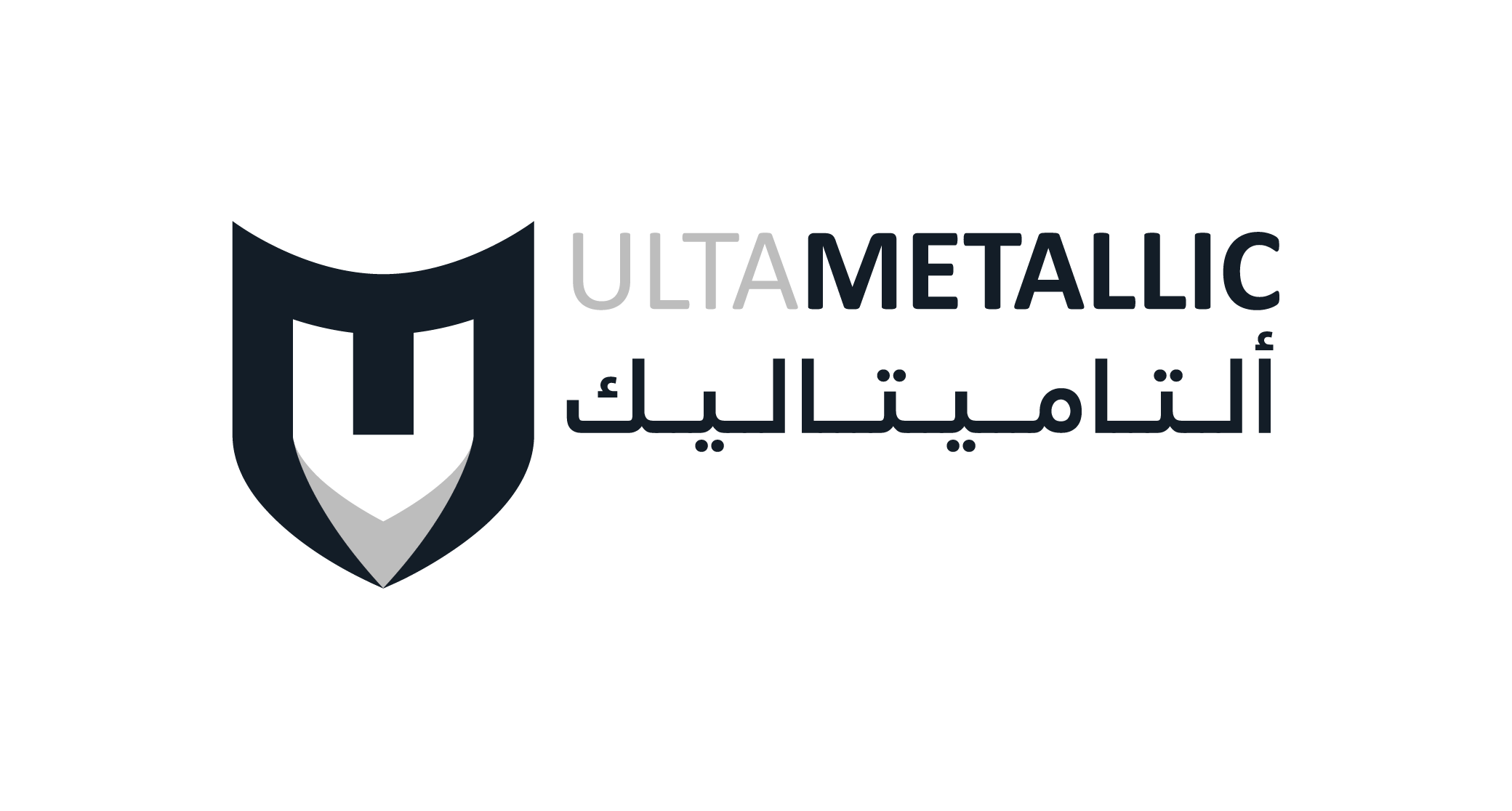

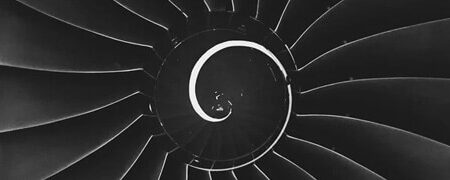
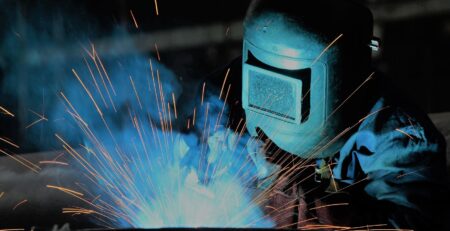
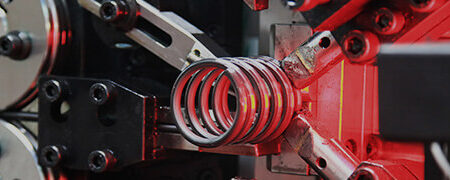
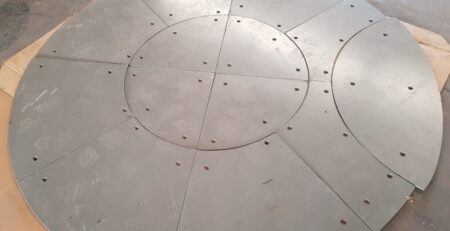
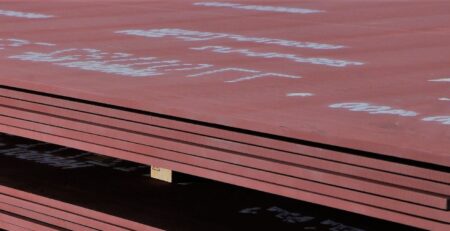
Leave a Reply